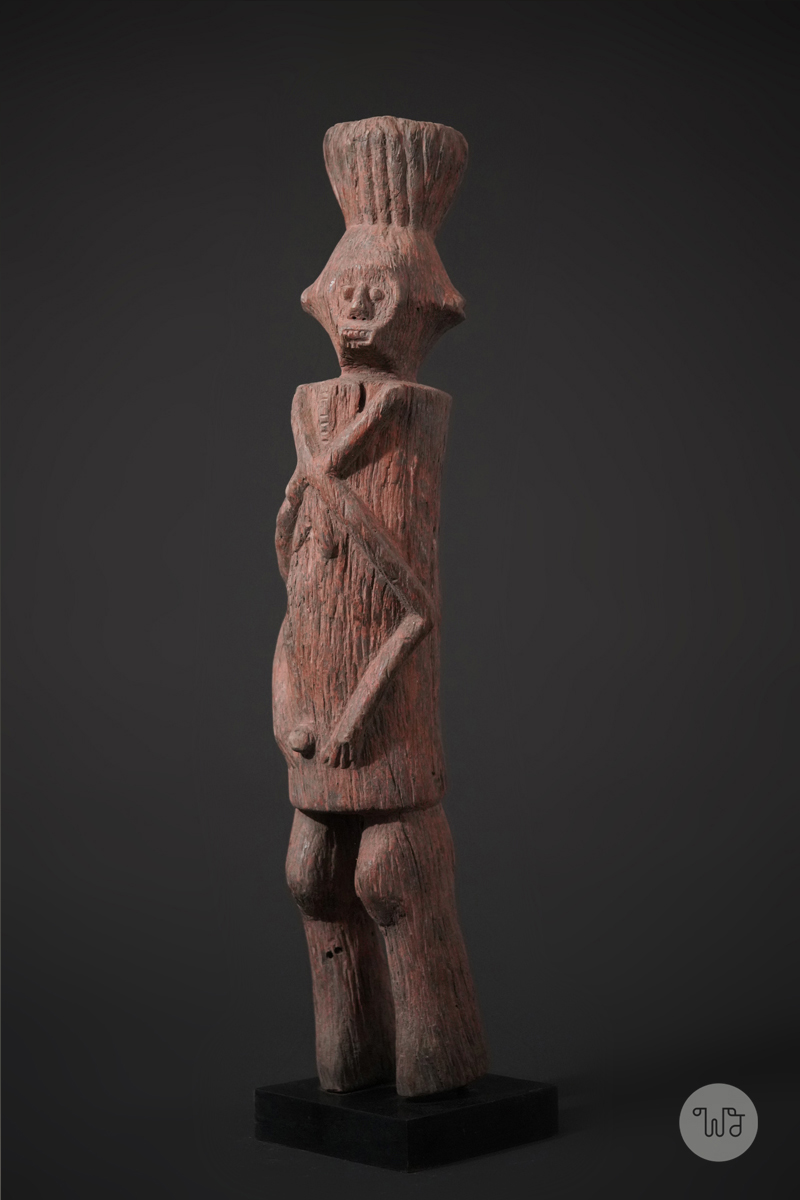 |
 A female Chamba sculpture from northern Nigeria carrying a transport object on her head. The almost abstract figuration of a woman consists of strong legs and arches of the knees that extend to the edge of the cylindrical torso; the arms are carved crosswise on the front and lead with the hands to the protruding navel, small facial surface on a round rombish head, carved ornaments in lines all over the statue, strong traces of age and use with remnants of patina.
"Similar to their Mumuye and Jukun neighbours, the Chamba venerate anthropomorphic statues of male and female gender. As Fardon (in Berns, Fardon and Kasfir 2011: 231) explains, figural "sculptures were highly versatile instruments in the Middle Benue. They might stand in particular for ancestors, or for a collectivity of the dead (ranging from those of a specific kin grouping to the dead generally), or for dangerous spirits that were taken to be human-like in appearance. In different contexts, the same anthropomorphic figure might evoke some or all of these types of being, and it might do so differently for participants, for onlookers, and for those excluded except by hearsay, who enjoyed more or less insight into what was taking place. To make the same point negatively, nothing we know about Middle Benue figures suggests that their unmodified formal properties specially suited them to one type of ritual use rather than another." And he continues (ibid.: 233): "Aside from occasional, slight differences in size, Middle Benue male and female sculptures are similar, differentiated by features of the head (particularly coiffure, earrings, or headgear, which are treated as secondary gendered characteristics)" Source: Myron Kunin Collection of African Art.
sold
Height: 91 cm
Weight: 10,1 kg |
 photo: wolfgang-jaenicke.com, for more information, please write us an e-mail with the identification number of the photo identification no. BBC14872.jpg
photo: wolfgang-jaenicke.com, for more information, please write us an e-mail with the identification number of the photo identification no. BBC14872.jpg |
|
